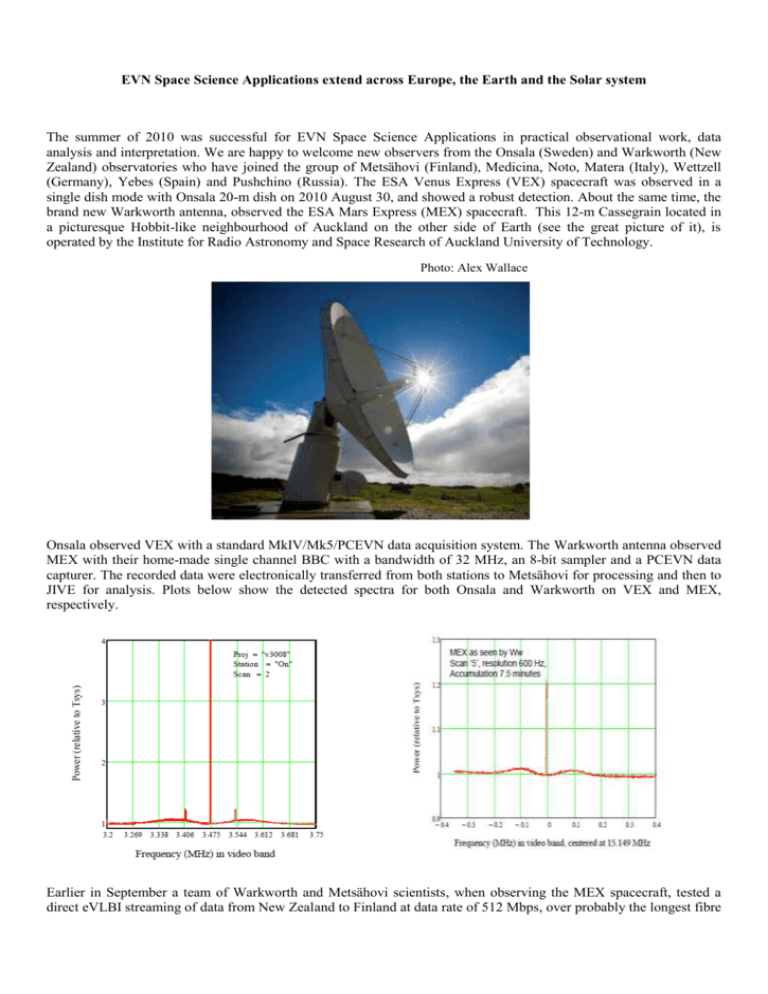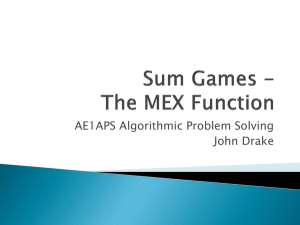EVN Space Science Applications extend across Europe, Earth and
advertisement

EVN Space Science Applications extend across Europe, the Earth and the Solar system The summer of 2010 was successful for EVN Space Science Applications in practical observational work, data analysis and interpretation. We are happy to welcome new observers from the Onsala (Sweden) and Warkworth (New Zealand) observatories who have joined the group of Metsähovi (Finland), Medicina, Noto, Matera (Italy), Wettzell (Germany), Yebes (Spain) and Pushchino (Russia). The ESA Venus Express (VEX) spacecraft was observed in a single dish mode with Onsala 20-m dish on 2010 August 30, and showed a robust detection. About the same time, the brand new Warkworth antenna, observed the ESA Mars Express (MEX) spacecraft. This 12-m Cassegrain located in a picturesque Hobbit-like neighbourhood of Auckland on the other side of Earth (see the great picture of it), is operated by the Institute for Radio Astronomy and Space Research of Auckland University of Technology. Photo: Alex Wallace Onsala observed VEX with a standard MkIV/Mk5/PCEVN data acquisition system. The Warkworth antenna observed MEX with their home-made single channel BBC with a bandwidth of 32 MHz, an 8-bit sampler and a PCEVN data capturer. The recorded data were electronically transferred from both stations to Metsähovi for processing and then to JIVE for analysis. Plots below show the detected spectra for both Onsala and Warkworth on VEX and MEX, respectively. Earlier in September a team of Warkworth and Metsähovi scientists, when observing the MEX spacecraft, tested a direct eVLBI streaming of data from New Zealand to Finland at data rate of 512 Mbps, over probably the longest fibre path in the World. The data were streamed from the Warkworth PCEVN data capture unit directly to a Linux RAID at Metsähovi using the tsunami protocol. First tests were successful and we hope a good science can be done soon with such observations, although more test are needed. PhD students G. Molera Calves (Aalto University, Helsinki, Finland) and D. Duev (Moscow State University, Moscow, Russia) and MSc student T. Bocanegra Bahamon (Delft University of Technology, Delft, The Netherlands), all working at JIVE during this summer, made significant contribution for the observations and analysis of the spacecraft tracking data. The results of the busy observing and data processing summer pave the way for future EVN observations in the framework of the Planetary Radio Interferometry and Doppler Experiment (PRIDE) – a multidisciplinary component of science programmes of several prospective deep space missions.











